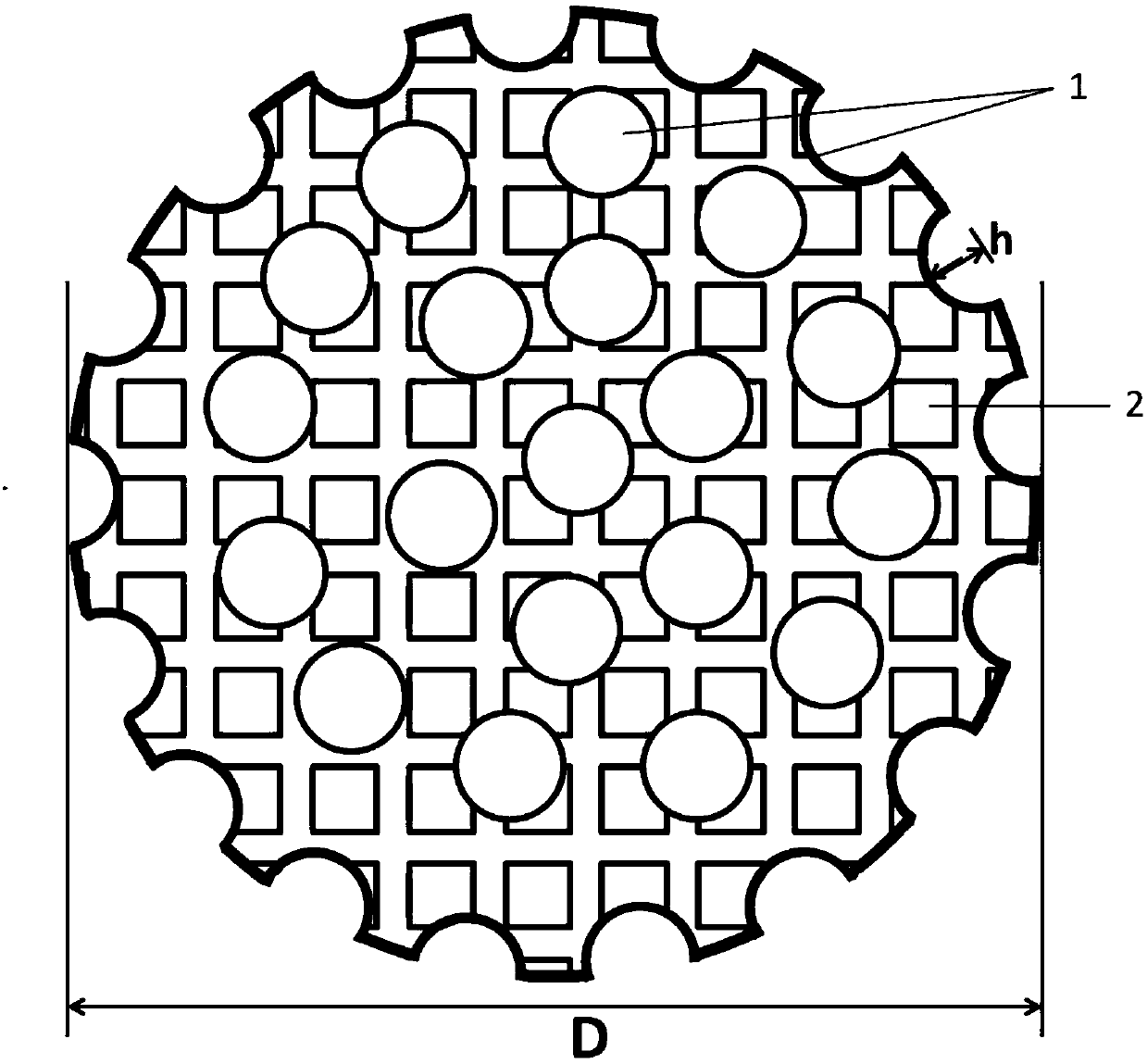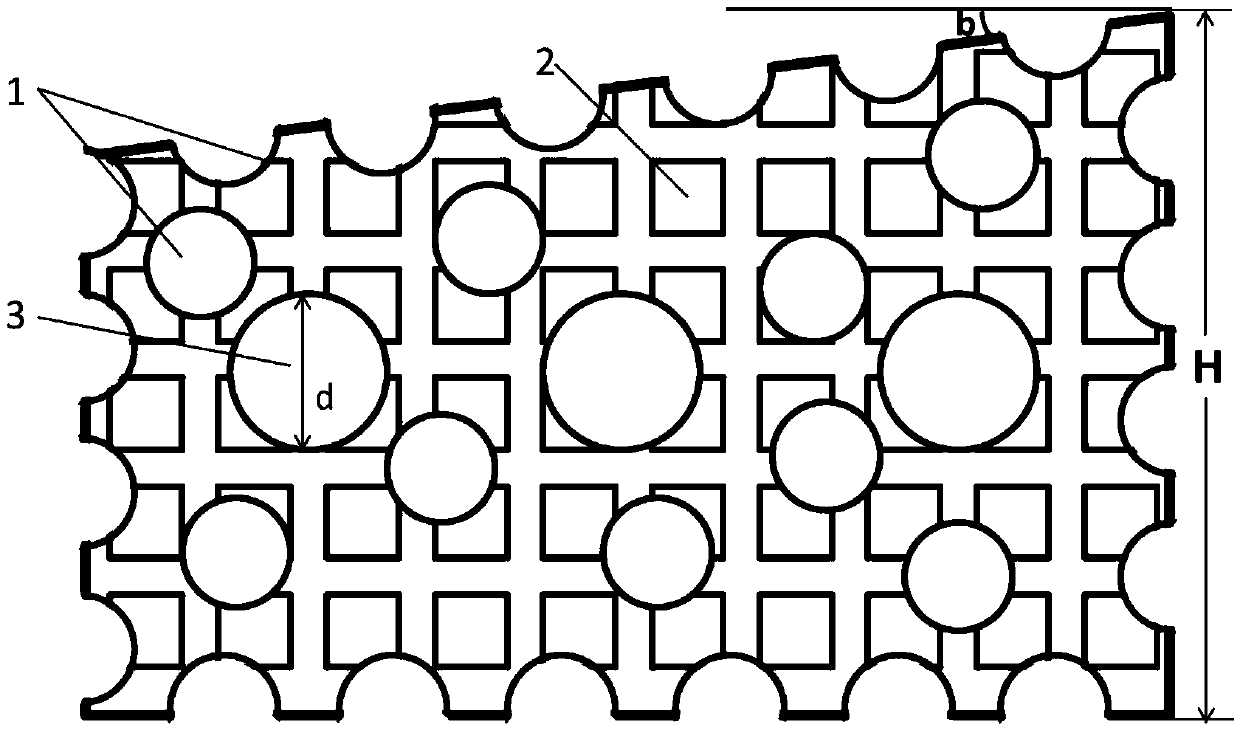A kind of cervical intervertebral fusion device and its preparation method
A fusion device and cervical spine technology, which is applied in the field of cervical intervertebral fusion device and its preparation, can solve the problems of insufficient bone-material interface bonding strength, low mechanical strength, loose bone implant, etc., to achieve migration and value-added, good long-term Fixing effect, enhancing the effect of mechanical locking
- Summary
- Abstract
- Description
- Claims
- Application Information
AI Technical Summary
Problems solved by technology
Method used
Image
Examples
Embodiment 1
[0026] (1) Silver-containing porous titanium alloy scaffold
[0027] Use Unigraphics software to design and build a three-dimensional graphic, input the model data into the powder laser sintering rapid prototyping equipment, and add alloy powder to the equipment for sintering and molding, and make a silver-containing porous titanium alloy bracket with grooves on the surface and through holes on the side; Among them, the alloy powder components are aluminum 7%, vanadium 5%, carbon 0.3%, iron 0.4%, silver 0.3%, and the rest is titanium.
[0028] The silver-containing porous titanium alloy stent described in this embodiment has a specification of: regular pores, an average pore diameter of 300 μm, and a porosity of 40%; a diameter (D) of 12 mm and a height (H) of a cylinder of 5 mm, with an arc-shaped concave surface. The groove depth (h) is 1mm, the upper surface is a slope of 3° (the angle shown in b), in order to maintain the physiological curvature of the cervical spine, and ...
Embodiment 2
[0032] (1) Silver-containing porous titanium alloy scaffold
[0033] Use Unigraphics software to design and build a three-dimensional graphic, input the model data into the powder laser sintering rapid prototyping equipment, and add alloy powder to the equipment for sintering and molding, and make a silver-containing porous titanium alloy bracket with grooves on the surface and through holes on the side; Among them, the alloy powder components are aluminum 5%, vanadium 3%, carbon 0.1%, iron 0.1%, silver 0.1%, and the rest is titanium.
[0034] The silver-containing porous titanium alloy stent described in this embodiment has specifications: regular pores, an average pore diameter of 500 μm, and a porosity of 50%; a diameter (D) of 14 mm, a height (H) of a cylinder of 10 mm, and a surface groove depth (h) is 5mm, and the upper surface is an inclined plane of 4° (the angle shown in b), so as to maintain the physiological curvature of the cervical spine, and the diameter (d) of t...
Embodiment 3
[0037] Example 3 In vitro rhBMP-2 release experiment
[0038] Soak the silver-containing cervical intervertebral fusion device prepared in Example 2 in phosphate buffer (pH=7) and shake it on a shaker at a constant temperature of 37°C, suck out 100 μL of the soaking solution every 5 days, and follow the rhBMP-2 ELISA kit (R&D ) instructions, measure the rhBMP-2 content in the soaking solution, repeat the above experiment three times, and calculate the average value. The results showed that the cumulative release of rhBMP-2 in the silver-containing cervical intervertebral fusion cage showed a gentle increasing trend, and the release time could be extended to about 35 days, as shown in Table 1.
[0039] Table 1 The cumulative release of rhBMP-2 in silver-containing cervical intervertebral fusion cages at different times
[0040] time / day
PUM
| Property | Measurement | Unit |
|---|---|---|
| pore size | aaaaa | aaaaa |
| diameter | aaaaa | aaaaa |
| height | aaaaa | aaaaa |
Abstract
Description
Claims
Application Information
 Login to View More
Login to View More - R&D
- Intellectual Property
- Life Sciences
- Materials
- Tech Scout
- Unparalleled Data Quality
- Higher Quality Content
- 60% Fewer Hallucinations
Browse by: Latest US Patents, China's latest patents, Technical Efficacy Thesaurus, Application Domain, Technology Topic, Popular Technical Reports.
© 2025 PatSnap. All rights reserved.Legal|Privacy policy|Modern Slavery Act Transparency Statement|Sitemap|About US| Contact US: help@patsnap.com



